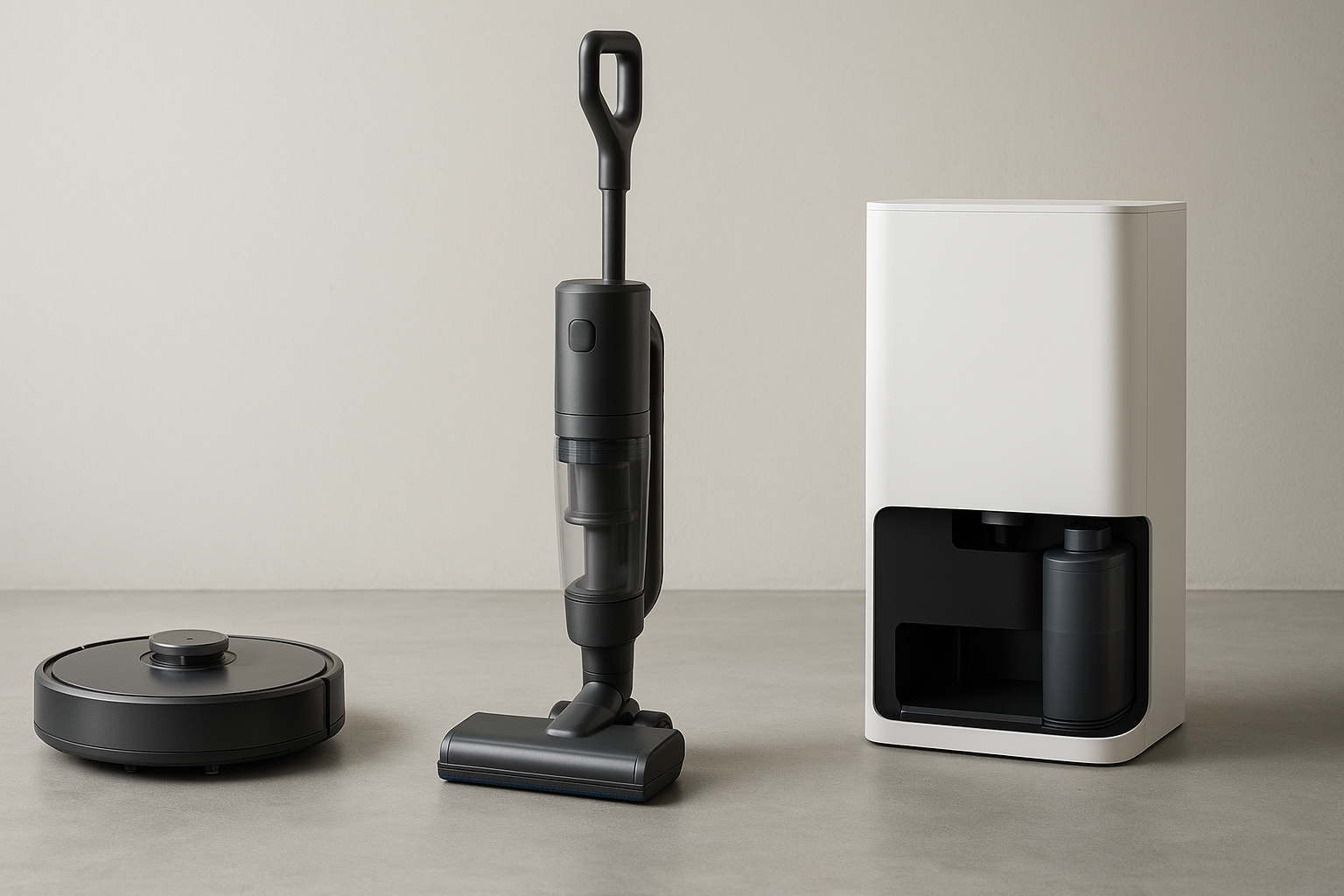 In today’s cleaning industry, technology is no longer a luxury but a necessity. As global demand for efficiency, hygiene, and sustainability accelerates, B2B buyers in Europe and the Middle East are shifting their focus from single products to integrated smart-cleaning ecosystems. These ecosystems combine smart vacuums, IoT platforms, sensors, and data analytics to create solutions that deliver measurable value at scale.
In today’s cleaning industry, technology is no longer a luxury but a necessity. As global demand for efficiency, hygiene, and sustainability accelerates, B2B buyers in Europe and the Middle East are shifting their focus from single products to integrated smart-cleaning ecosystems. These ecosystems combine smart vacuums, IoT platforms, sensors, and data analytics to create solutions that deliver measurable value at scale.
For distributors, engineers, and procurement managers, the future is not about buying a single device—it’s about investing in connected systems that enhance performance, cut costs, and improve long-term customer satisfaction.
1. Beyond Single Devices: Why Ecosystems Matter
A smart vacuum can simplify cleaning, but its true potential is realized when it becomes part of a larger system. For example, while a High Suction Vacuum Cleaner delivers raw power, its value multiplies when connected with data-driven cleaning platforms that track energy use, predict maintenance, and optimize workflows.
This shift reflects what has happened in IT, where businesses moved from standalone hardware to cloud ecosystems. In the same way, cleaning buyers increasingly want scalable solutions, not just machines.
2. Key Features B2B Buyers Prioritize
Performance & Efficiency
Durability and power remain non-negotiable. A Multi-Functional Durable Vacuum Cleaner is attractive not only for its long service life but also for reducing downtime and replacement costs.
Noise Reduction
Quiet operations are critical in hotels, offices, and healthcare facilities. A Quiet Vacuum Cleaner ensures professional cleaning without disrupting guests, patients, or staff.
Portability & Flexibility
Mobility is a must in airports, hospitals, and large offices. Tools like the Portable Self-Cleaning Vacuum Cleaner or the Cordless Vacuum Cleaner give staff the flexibility to clean quickly without dragging cables across busy spaces.
Wet & Dry Functionality
Sectors such as construction and automotive demand versatility. Machines like the Large-Capacity Wet Dry Vacuum Cleaner and the 4 in 1 Cordless Smart Wet & Dry Vacuum Cleaner handle multiple tasks, reducing the need for multiple devices.
3. Why Ecosystems Outperform Standalone Devices
When combined, individual machines become part of a powerful system:
A Fast Lightweight Vacuum Cleaner integrated with IoT tools can provide real-time cleaning status.
The Energy-Saving Efficient Powerful Vacuum Cleaner linked with facility management software helps optimize energy consumption.
A Cordless Handheld Vacuum Cleaner can complement robotic cleaning units for spot-cleaning tasks.
By integrating these devices, companies reduce labor costs, improve scheduling, and gain measurable efficiency.
Industry Report: How IoT Is Revolutionizing Facility Management
4. The Role of Data in Smart Ecosystems
Smart-cleaning ecosystems are built on data. With sensors and cloud-based platforms, cleaning operations can be:
Monitored: Usage tracked in real time.
Optimized: Predictive analytics schedule cleaning before dirt builds up.
Automated: Systems adjust suction, noise level, or routes without human input.
For B2B buyers, this data-driven model not only demonstrates ROI but also ensures compliance with hygiene standards and supports corporate sustainability initiatives.
Research from ISSA – The Worldwide Cleaning Industry Association
5. Market Trends in Europe and the Middle East
Europe
Sustainability is the leading driver. Devices like the Energy-Saving Efficient Powerful Vacuum Cleaner align with EU energy regulations and environmental goals.
Middle East
Buyers here demand durability and versatility. Wet Dry Vacuum Cleaners are favored for handling sand, dust, and moisture in large commercial environments.
Case Study: How Dyson Reinvented Commercial Cleaning Solutions
6. Future Outlook for B2B Buyers
The next evolution of cleaning ecosystems will integrate AI and robotics, creating semi-autonomous cleaning systems. Early adopters will gain:
Lower operating costs through automation and energy efficiency.
Higher hygiene standards with consistent, measurable cleaning.
Scalability for expanding facilities and global operations.
For distributors and facility managers, embracing ecosystems is about more than technology—it’s about securing a leadership position in efficiency and sustainability.
Conclusion
The cleaning industry is at a tipping point. Buyers in Europe and the Middle East are no longer satisfied with stand-alone vacuums; they expect smart ecosystems that combine hardware, software, and analytics. From the Car Vacuum Cleaner to AI-driven wet & dry solutions, every device has a role in the larger transformation.
The message is clear: ecosystems are no longer optional. For forward-thinking B2B buyers, the future of smart cleaning starts today.
👉 Learn more at www.lxvacuum.com
📌 Hashtags
#HighSuctionVacuumCleaner, #QuietVacuumCleaner, #PortableSelfCleaningVacuumCleaner, #MultiFunctionalDurableVacuumCleaner, #FastLightweightVacuumCleaner, #EnergySavingEfficientVacuum, #LargeCapacityWetDryVacuumCleaner, #CordlessHandheldVacuumCleaner, #WetDryVacuumCleaners, #4in1CordlessSmartVacuum, #CordlessVacuumCleaner, #CarVacuumCleaner, #CommercialVacuumCleaners, #IndustrialCleaningEquipment, #SmartVacuumSystems, #IoTCleaningDevices, #RoboticVacuumSolutions, #SustainableVacuumTechnology, #EcoFriendlyVacuumCleaners, #OfficeCleaningSolutions, #HotelVacuumSolutions, #HealthcareCleaningEquipment, #B2BCleaningProcurement, #WholesaleVacuumSuppliers, #MiddleEastVacuumMarket, #EuropeanVacuumMarket, #VacuumProductDevelopers, #FacilityManagementSolutions, #SmartCleaningTechnologies, #CommercialWetDryVacuums, #CordlessIndustrialVacuums, #EnergyEfficientCleaning, #SilentVacuumSolutions, #PortableLightweightDevices, #LargeScaleCleaningEcosystems, #VacuumProcurementTrends, #CommercialPropertyCleaning, #ConstructionVacuumCleaners, #AutomotiveVacuumSolutions, #DurableCommercialVacuums, #EnterpriseCleaningTechnology, #NextGenVacuumSystems, #B2BVacuumInnovations, #VacuumDataAnalytics, #PredictiveCleaningSolutions, #SmartCleaningRobotics, #GlobalVacuumBuyers, #VacuumEntrepreneurs, #CleaningIndustryEngineers, #ProfessionalCleaningAssociations
















